
Chapter 9
Quality of Service on the Internet
Although the Internet has been traditionally a best-effort network, the ability to provide a
certain level of QoS for certain packet flows is essential for some applications. For example,
while the user of a file transfer application may accept a longer transfer delay when the
network is congested, a multimedia user may find trying to maintain a conversation with a
long round-trip delay irritating. Such users would probably request a higher QoS for their
multimedia flows than for the rest of their flows.
However, QoS is not only about requesting a better treatment for certain flows; users also
want to know if the network will be able to provide them with the requested QoS. If there is
a long delay or a high packet loss rate, some users may prefer to exchange instant messages
instead of having a VoIP (Voice over IP) conversation.
There are two models that provide QoS on the Internet: the Integrated Services model
and the Differentiated Services (DiffServ) model. We cover the former in Section 9.1 and the
latter in Section 9.2.
9.1 Integrated Services
The Integrated Services architecture (specified in RFC 1633 [89]) was designed to provide
end-to-end QoS. Endpoints request a certain level of QoS for their packet flows and, if the
network grants it, their routers treat those flows accordingly. There are two different services
available in this architecture: the controlled load service and the guaranteed service.
The controlled load service ensures that packets are treated as if the network was under
moderate load. Flows using this service are not affected by network congestion when this
appears. Nevertheless, the network does not guarantee a certain bandwidth or a certain delay.
This service can be seen as a better-than-best-effort service.
The guaranteed service guarantees a certain bandwidth or a certain delay threshold.
In practice, it is not common to see this service in use because the controlled load service
is often good enough and is easier to manage.
9.1.1 RSVP
The Integrated Services architecture uses RSVP (Resource ReSerVation Protocol, specified
in RFC 2205 [90]) as the resource reservation protocol. Endpoints send RSVP messages
requesting a certain QoS (e.g., a certain bandwidth) for a flow. Routers receiving these
´ıa- M ar t´ın
The 3G IP Multimedia Subsystem (IMS): Merging the Internet and the Cellular Worlds Third Edition
Gonzalo Camarillo and Miguel A. Garc
© 2008 John Wiley & Sons, Ltd. ISBN: 978- 0- 470- 51662- 1

268
CHAPTER 9. QUALITY OF SERVICE ON THE INTERNET
messages obtain a description of the flow (e.g., source and destination transport addresses) as
well, so that they can apply the correct treatment to all the packets that belong to it. Obviously,
RSVP needs to ensure that the routers receiving resource reservation requests for a flow are
the routers that will route the packets of that flow. That is, RSVP messages need to follow
the same path as the packets of the flow (e.g., RTP packets carrying voice). Let us see how
RSVP achieves this.
An RSVP reservation consists of a two-way handshake: a PATH message is sent and a
RESV message is received, as shown in Figure 9.1. The PATH message is sent from endpoint
A to endpoint B, and the network routes it as for any other IP packet. At a later time, when
endpoint A sends RTP packets with voice to endpoint B, they will follow the same path as
the PATH message did.
Endpoint A
(1) PATH
Endpoint A
Endpoint BRouter 1
(2) PATH
Endpoint A
Router 1
Router 2
(3) PATH
Endpoint A
Router 1
Router 2
(4) RESV
Router 2
Router 1
Endpoint A
(5) RESV
Router 1
Endpoint A
(6) RESV
Endpoint A
Figure 9.1: RSVP operation
PATH messages store the nodes they traverse. This allows RESV messages to be routed
back to endpoint A, following the same path as the PATH message followed but in the
opposite direction. In short, PATH messages leave a trail of bread crumbs so that RESV
messages can find their way home. Note that SIP uses the same mechanism to route responses
back to the UAC (see Section 4.6). SIP uses the Via header field to store the trail left by the
request.
Resource reservation actually takes place when routers receive RESV messages. There-
fore, resource reservation is actually performed by endpoint B; that is, the receiver of the
flow (e.g., the RTP packets). PATH messages only mark the path that RESV messages have
to follow.
Note, however, that the packets of the flow follow the same path as the PATH message
as long as there are no routing changes in the network. If, as a consequence of a change in
the network topology, packets from endpoint A to endpoint B start following a different path,
a new resource reservation is needed. RSVP tackles this using soft states. Reservation soft
states created by RESV messages are kept in routers only for a period of time. If they timeout
before they are refreshed by a new RESV message, routers just delete them.
Endpoints periodically exchange PATH and RESV messages while the flow (e.g., the RTP
packets) is active. This way, after a change in the routing logic in the network, those routers
that no longer remain in the path between the endpoints do not get any new refreshes and,

9.2. DIFFERENTIATED SERVICES
269
consequently, remove their reservation state. New routers start receiving RESV messages
that install the reservation state needed for the flow.
Note that RSVP is an admission control protocol, in addition to being a resource
reservation protocol. A router can reject a resource reservation request, either because the
router does not have enough resources or because the user is not allowed to reserve them.
9.1.2 State in the Network
The main problem with the integrated services architecture is that the network needs to store
a lot of state information. When a packet arrives at a router, the router needs to check all
the reservations it is currently handling to see whether the packet belongs to any of them.
This means that routers need to store state information about every flow and need to perform
lookups before routing any packet. Even though RSVP supports aggregation of reservations
for multicast sessions in order to reduce the state the network needs to keep, the general
feeling is that RSVP does not scale well when implemented in the core network. On the
other hand, RSVP can be used to perform admission control or to connect DiffServ clouds
without these scalability problems.
9.2 Differentiated Services
The DiffServ architecture (specified in RFC 2475 [87] and RFC 3260 [157]) addresses some
of the problems in the integrated services architecture. DiffServ routers need to keep a
minimal state, enabling them to decide which treatment a packet needs more quickly.
DiffServ routers know what treatments a packet can get. These treatments are referred to
as Per-Hop Behaviors (PHBs) and are identified by 8-bit codes called Differentiated Services
Codepoints (DSCPs). IP packets are marked at the edge of the network with a certain DSCP
so that routers in the path apply the correct PHB to them. Two examples of standard PHBs
are expedited forwarding (specified in RFC 3246 [117]) and assured forwarding (specified
in RFC 2597 [165]). Packets to which the expedited forwarding PHB is applied do not
see any congestion in the network. Effectively, they are treated as if they were transmitted
over a TDM (Time Division Multiplexing) circuit that was exclusively reserved for them.
The assured forwarding PHB provides different drop precedence levels, so that low-priority
packets are discarded before high-priority ones under congestion conditions.
Version Header
Length Type of Service Total Length
Identification Flags Fragment Offset
Time to Live Protocol Header Checksum
Source Address
Destination Address
015 31
Figure 9.2: DSCP is encoded in the Type of Service field in IPv4

270
CHAPTER 9. QUALITY OF SERVICE ON THE INTERNET
Version Traffic Class Flow Label
Payload Length Next Header Hop Limit
015 31
Source Address
Destination Address
Figure 9.3: DSCP is encoded in the Traffic Class field in IPv6
IP packets carry their DSCPs in their IP header. The format of IPv4 and IPv6 headers is
shown in Figures 9.2 and 9.3, respectively. The DSCP for a packet is placed in the Type of
Service field in IPv4 and in the Traffic Class field in IPv6.


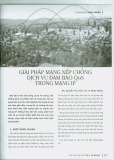

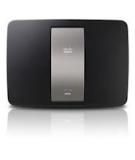

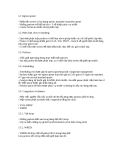
![Nhu cầu về QoS và các mô hình QoS [chuẩn nhất]](https://cdn.tailieu.vn/images/document/thumbnail/2011/20110721/congnghe08/135x160/bai_1_bai_viet_gioi_thieu_ve_chat_luong_dich_vu_trong_mang_campus_7901.jpg)
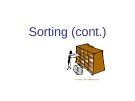









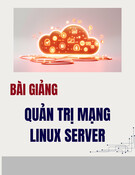
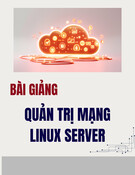

![Đề thi cuối kì Nhập môn Mạng máy tính: Tổng hợp [Năm]](https://cdn.tailieu.vn/images/document/thumbnail/2025/20251110/nminhthoi53@gmail.com/135x160/38281762757217.jpg)


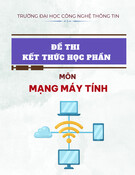
![Đề thi học kì 2 môn Nhập môn Mạng máy tính [kèm đáp án]](https://cdn.tailieu.vn/images/document/thumbnail/2025/20251014/lakim0906/135x160/23811760416180.jpg)
